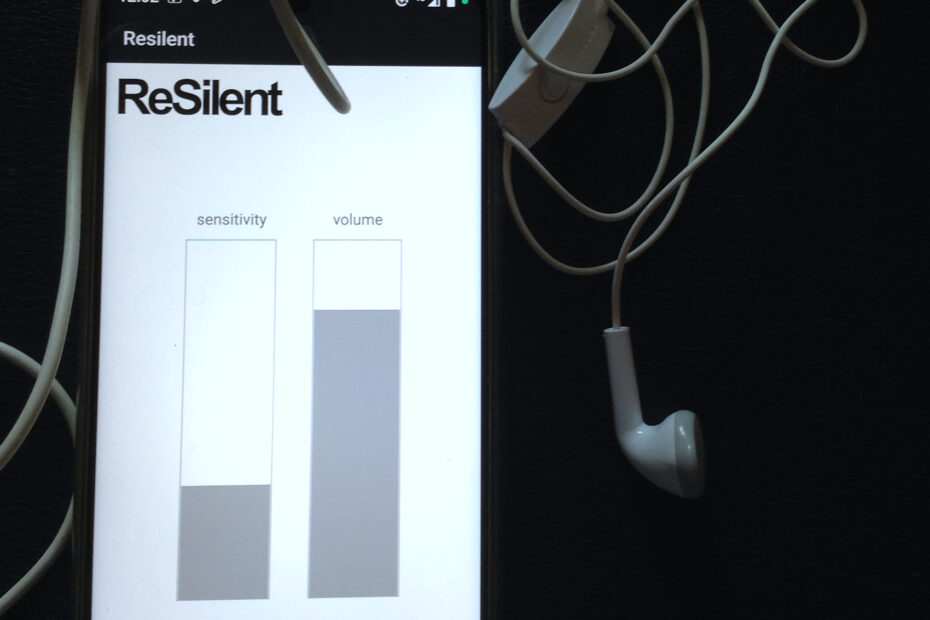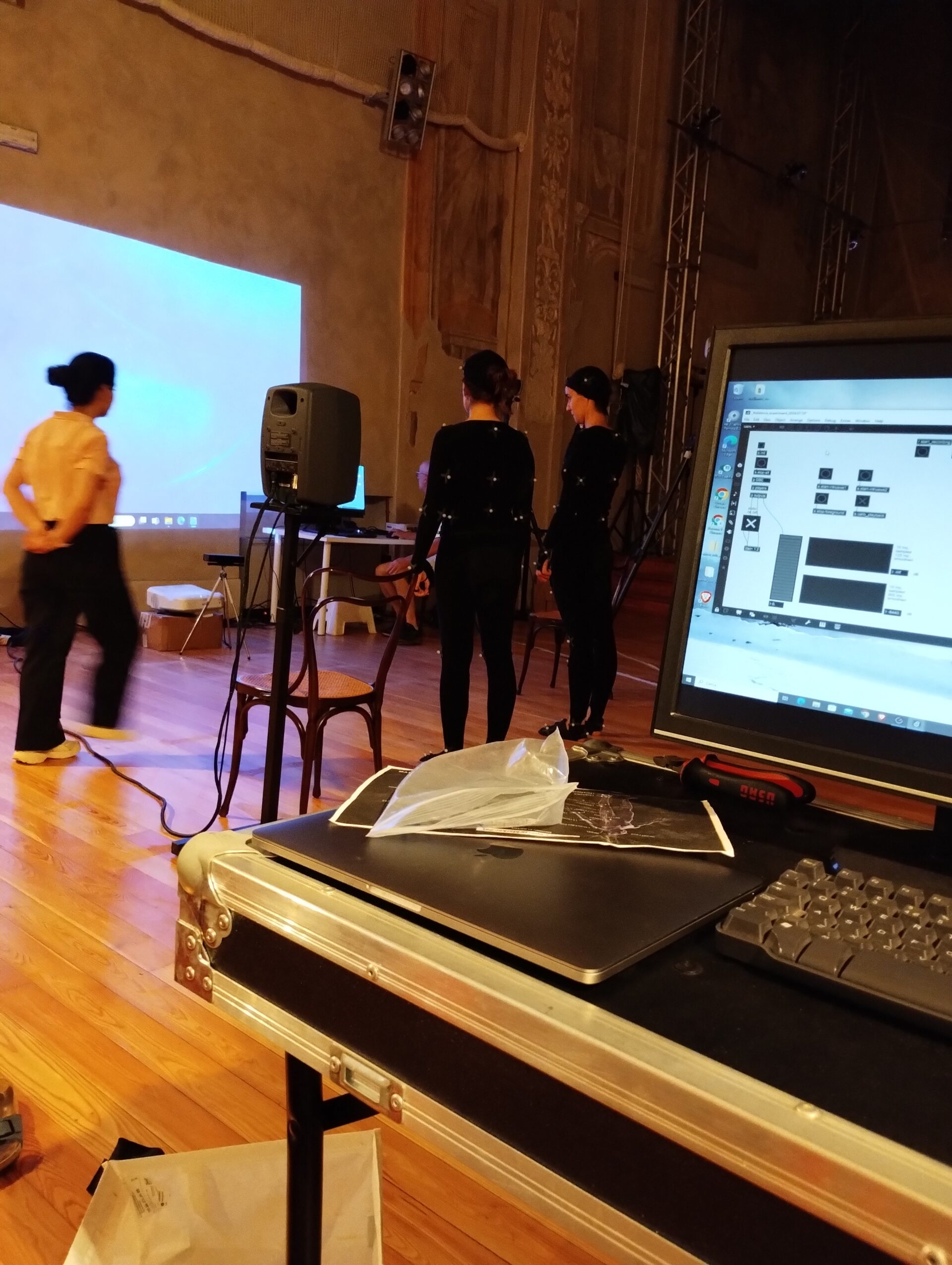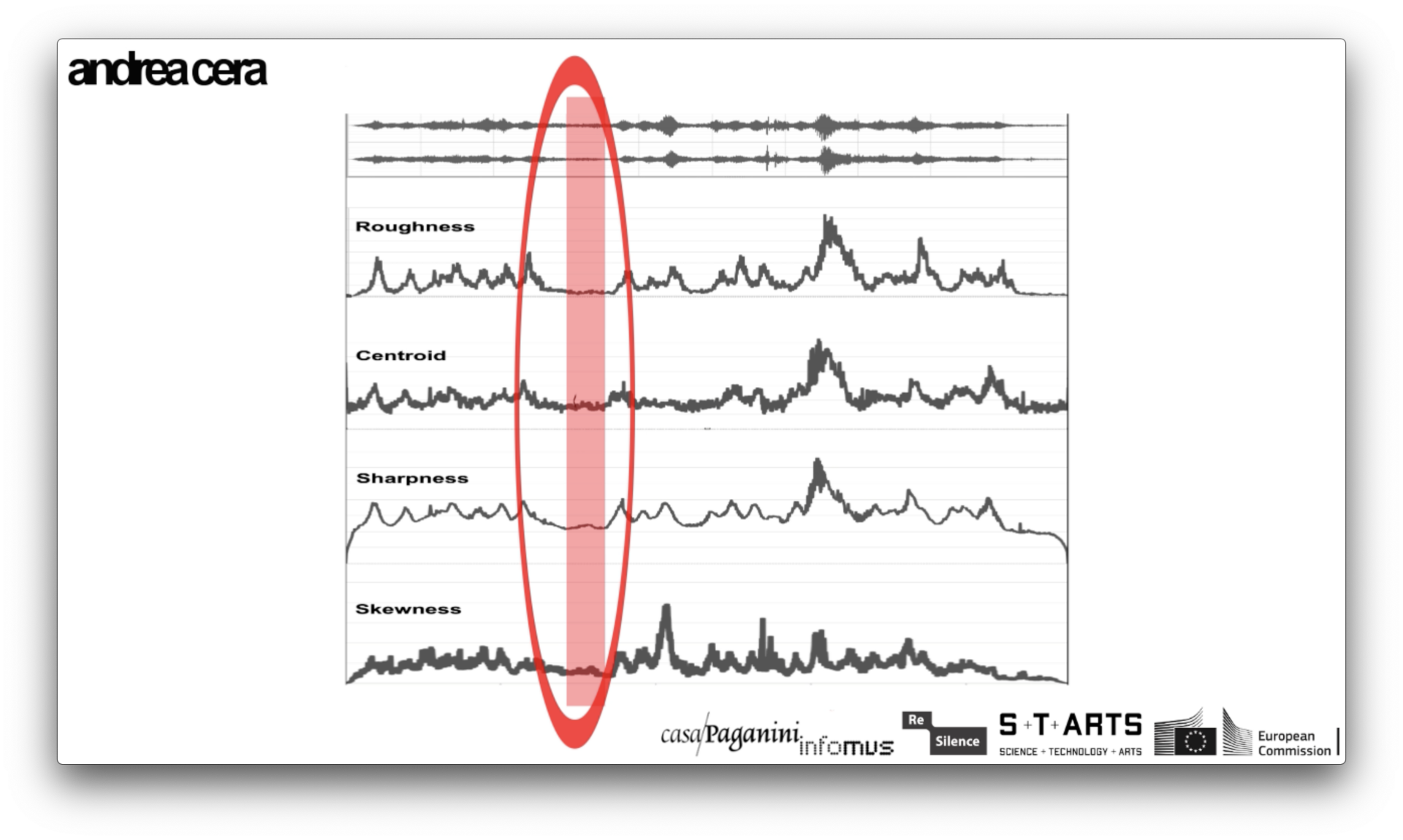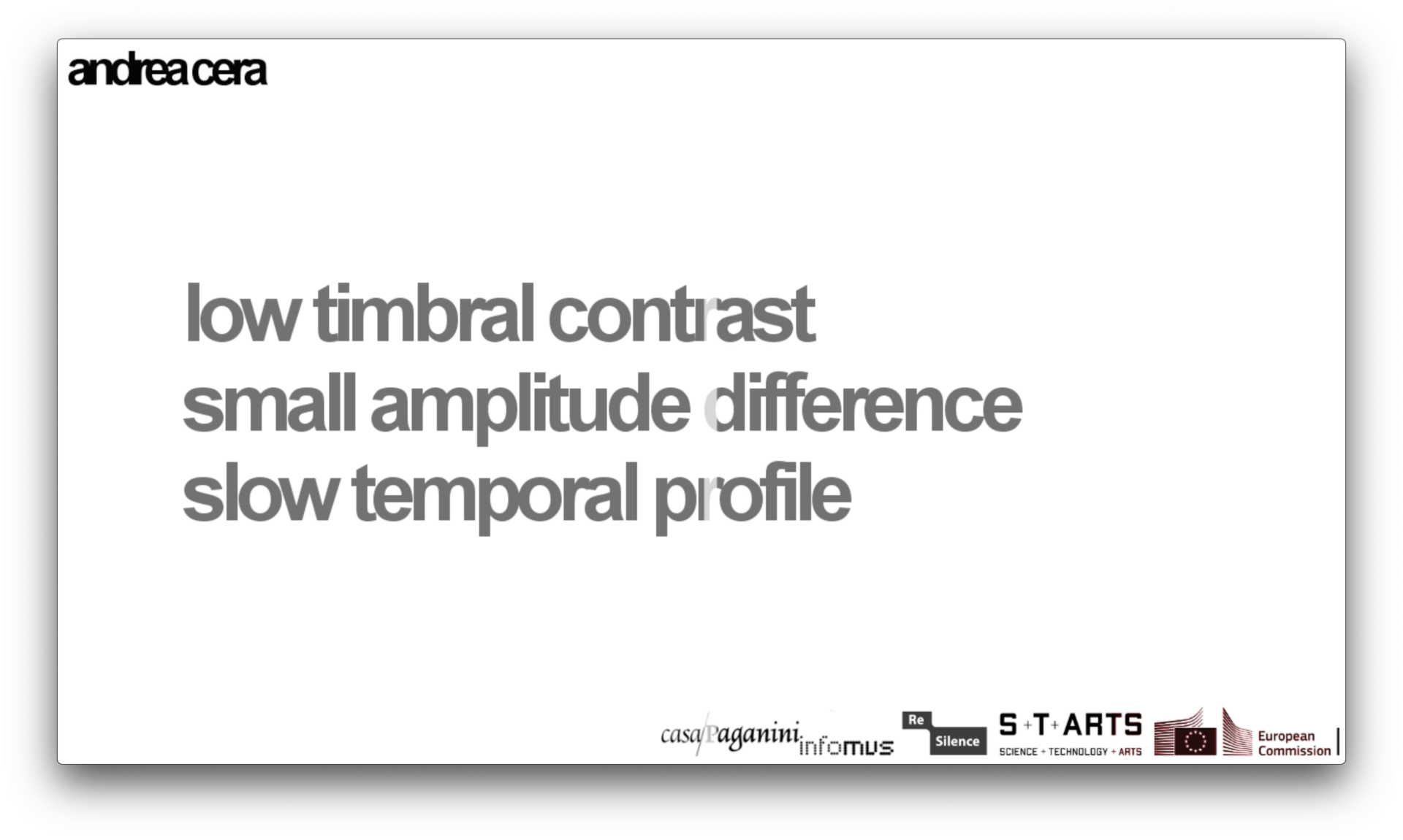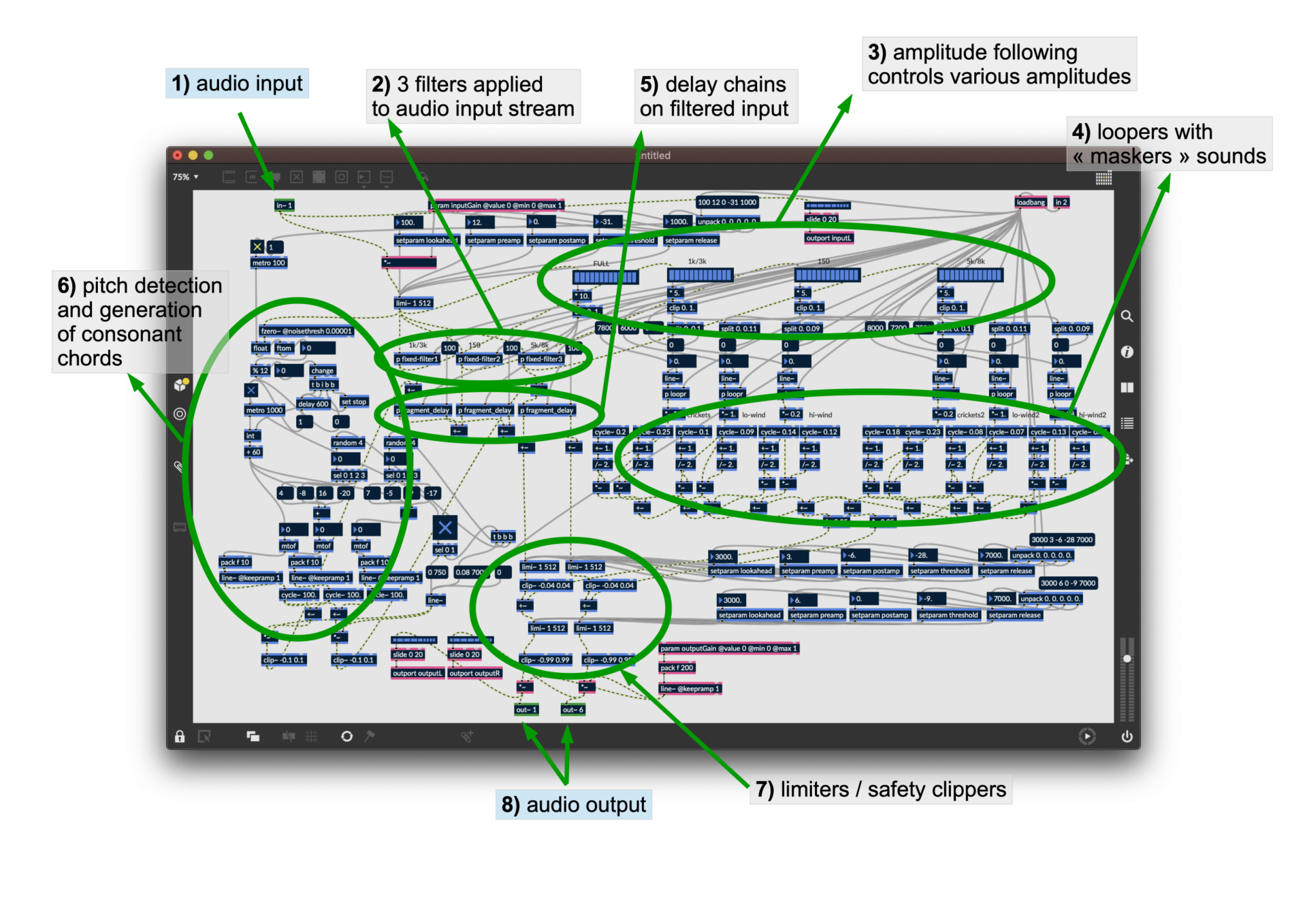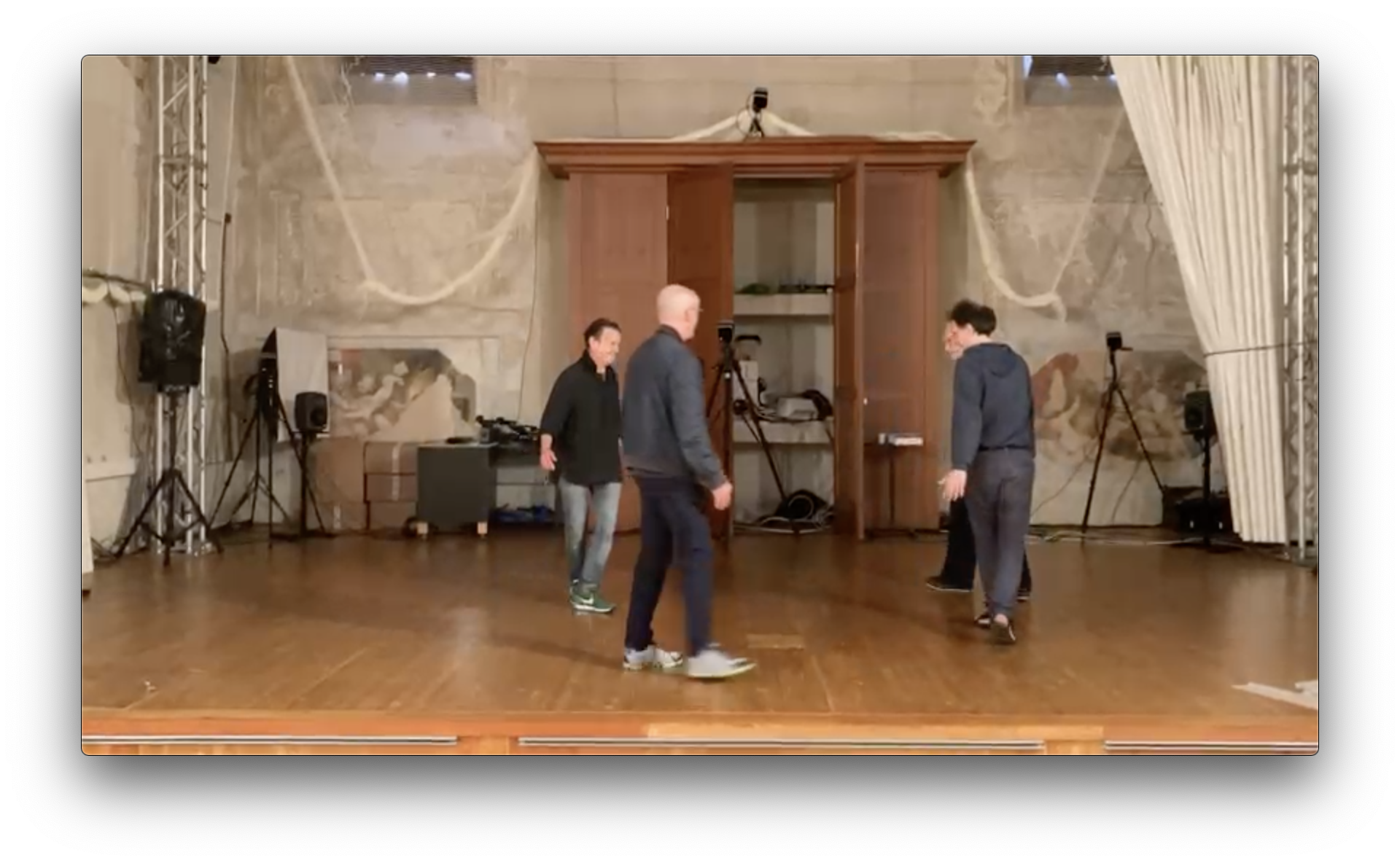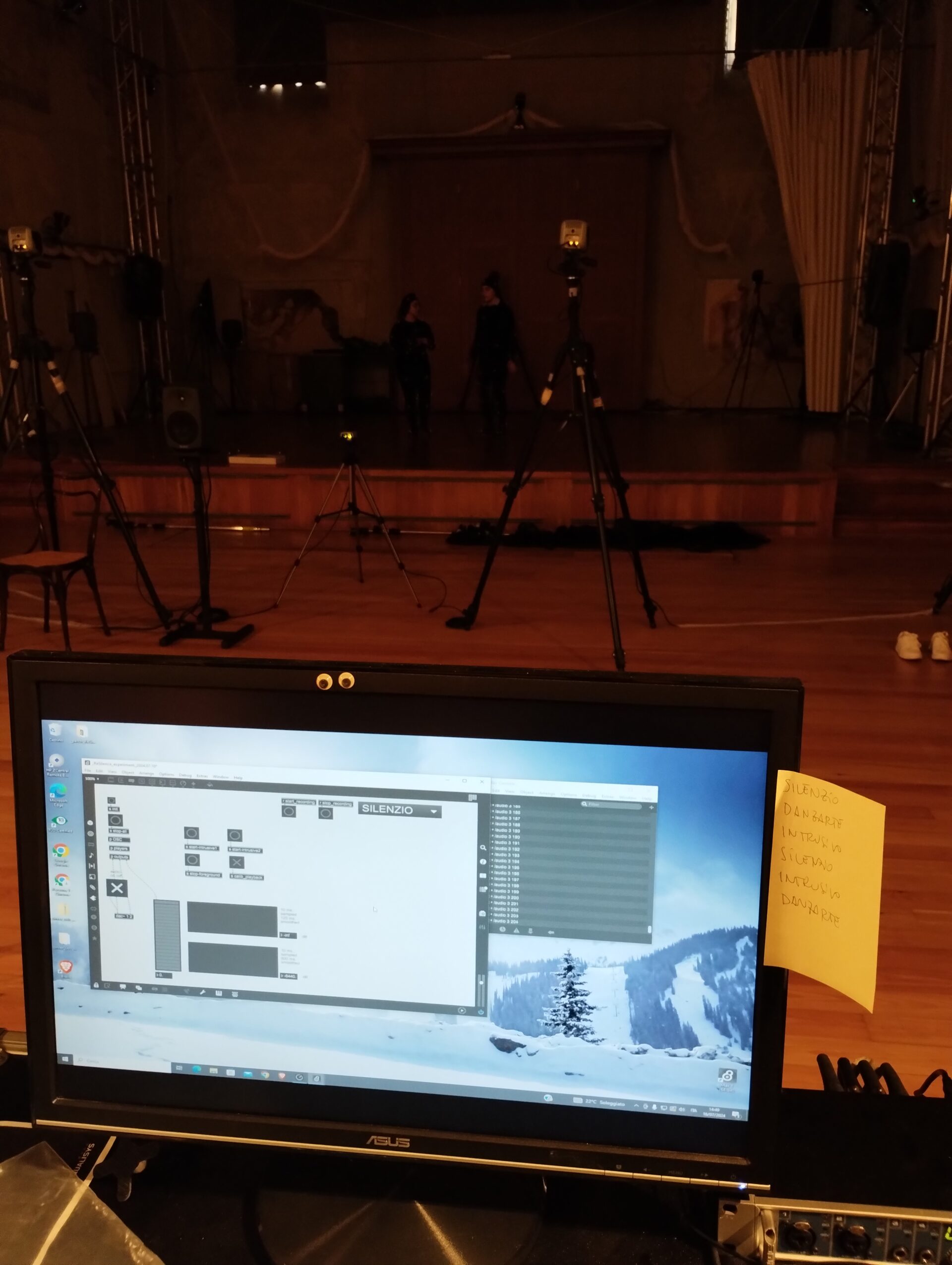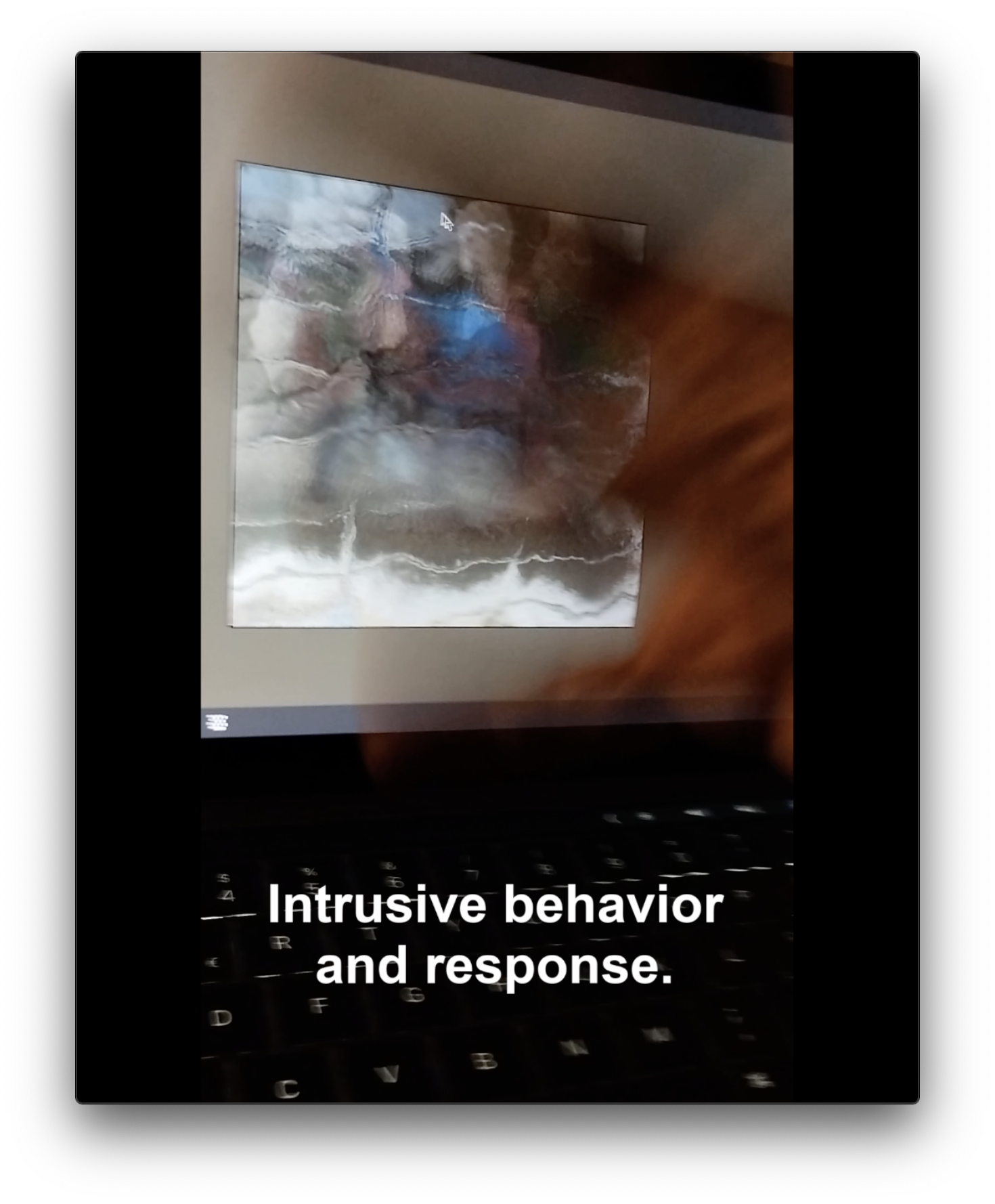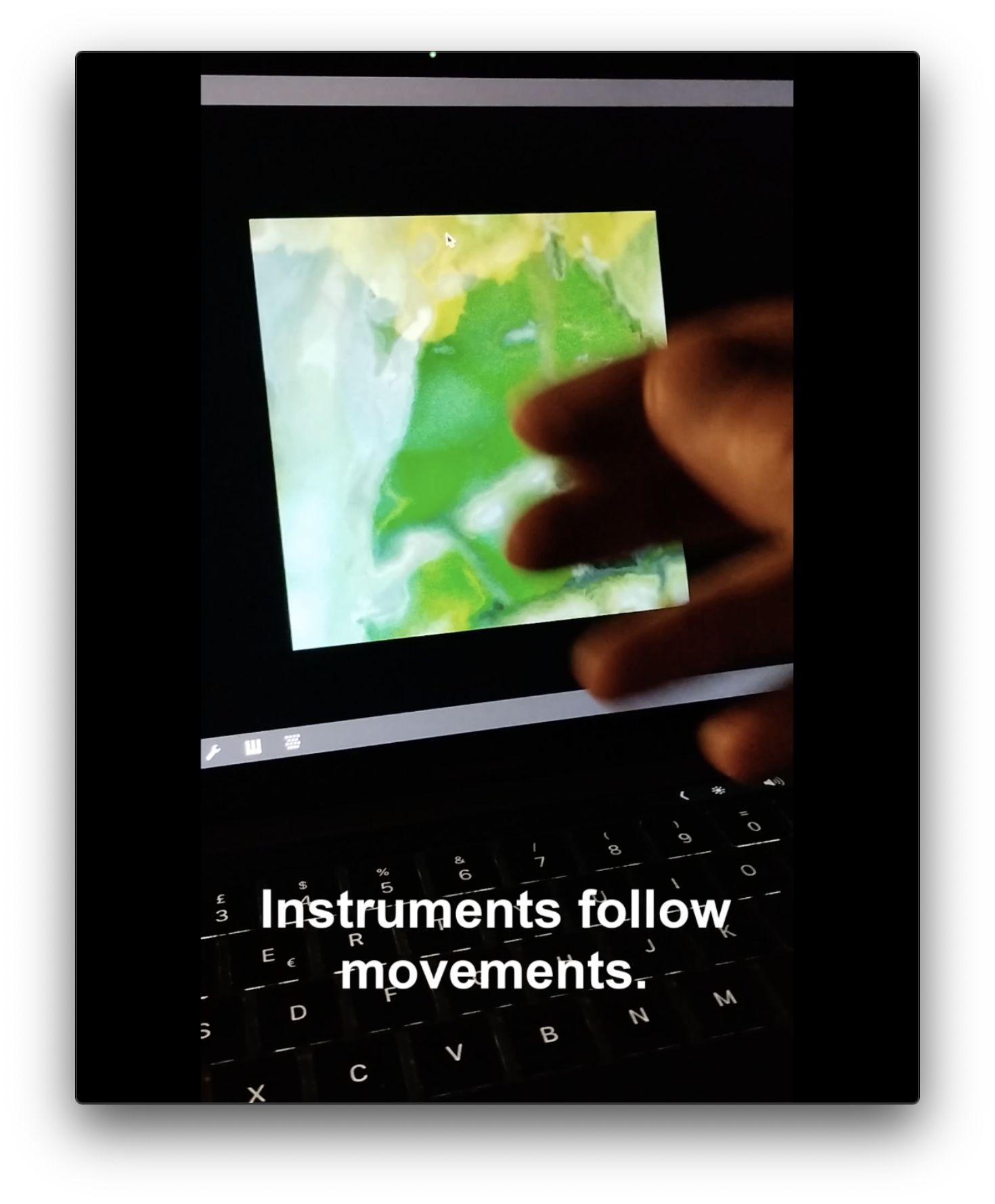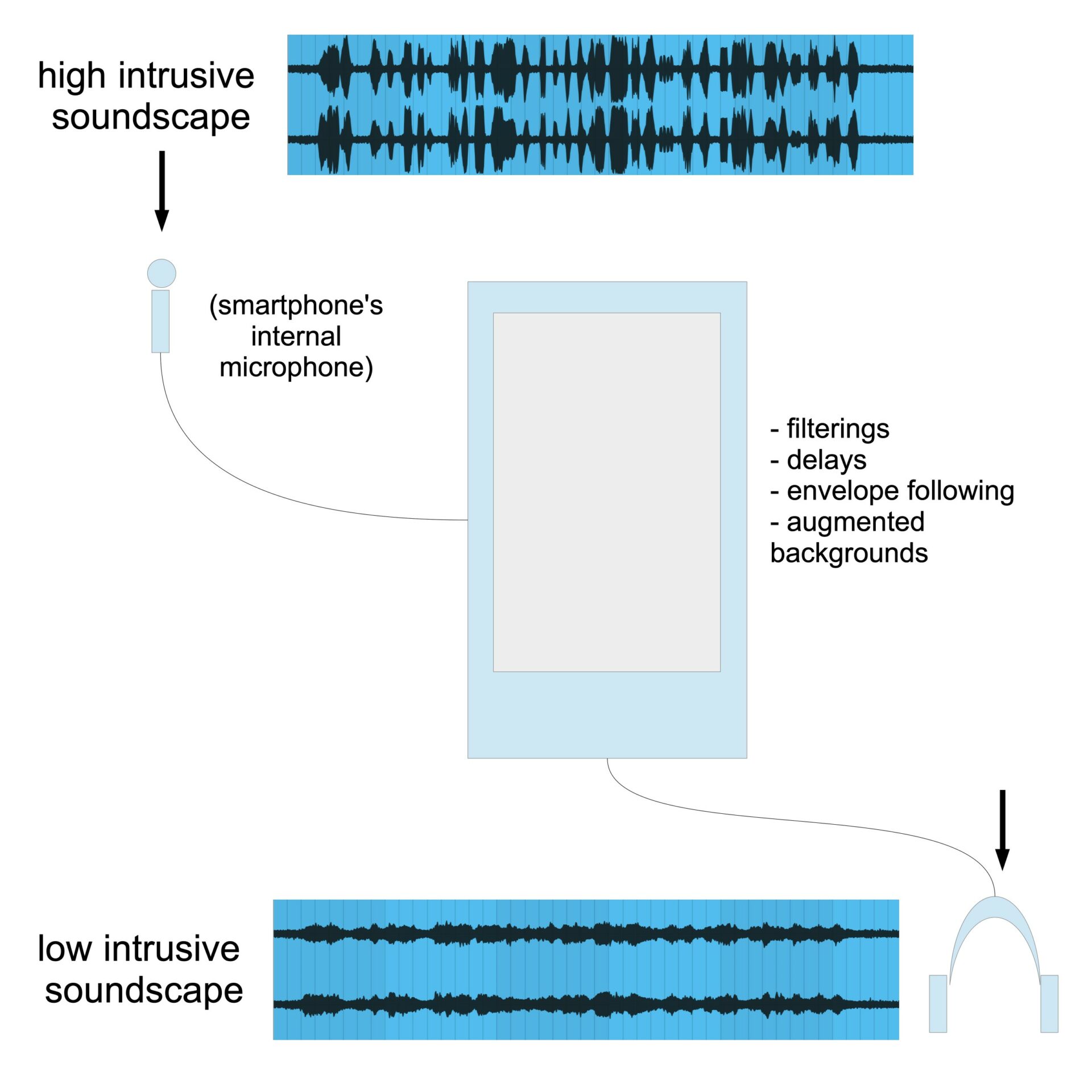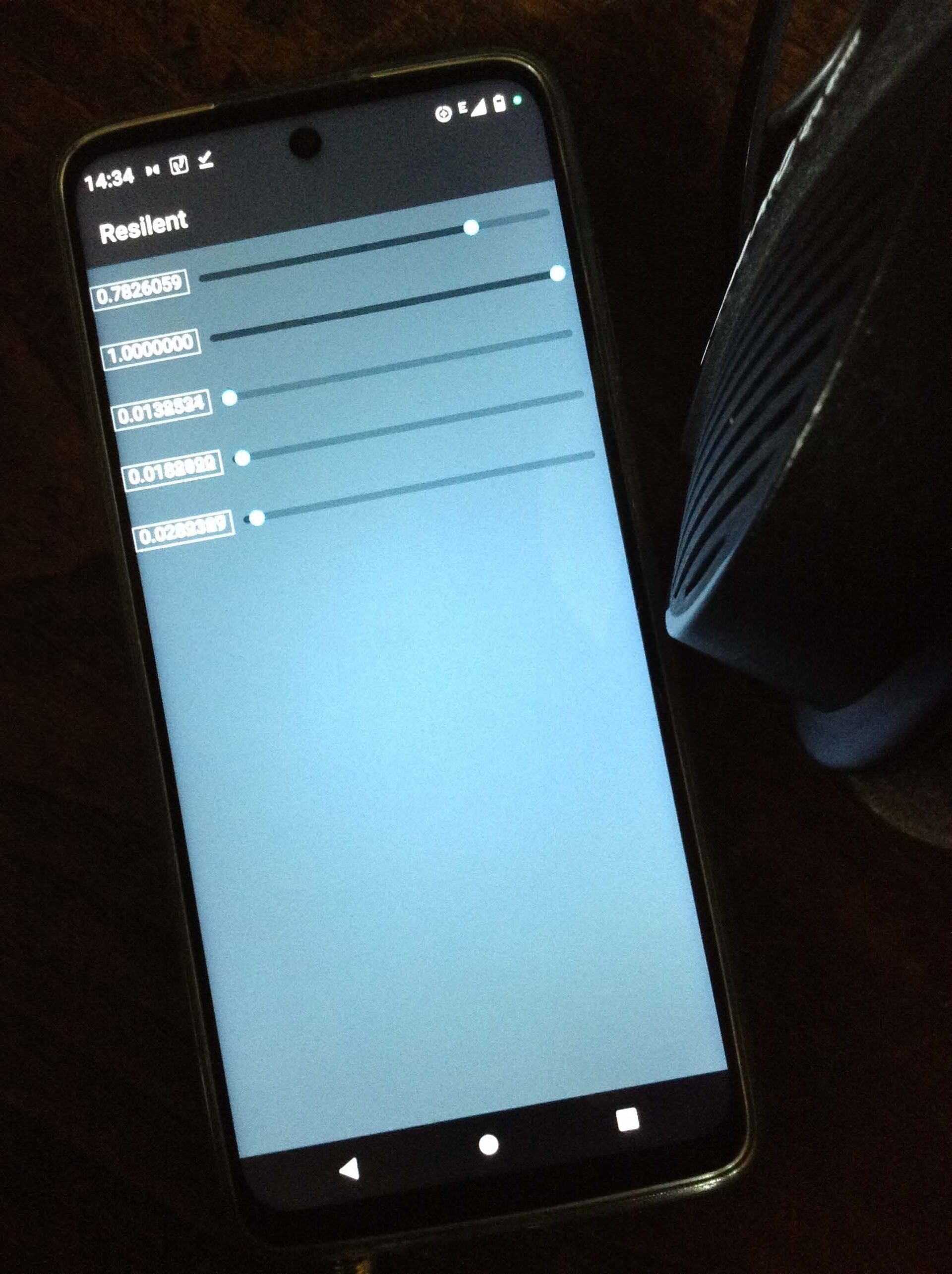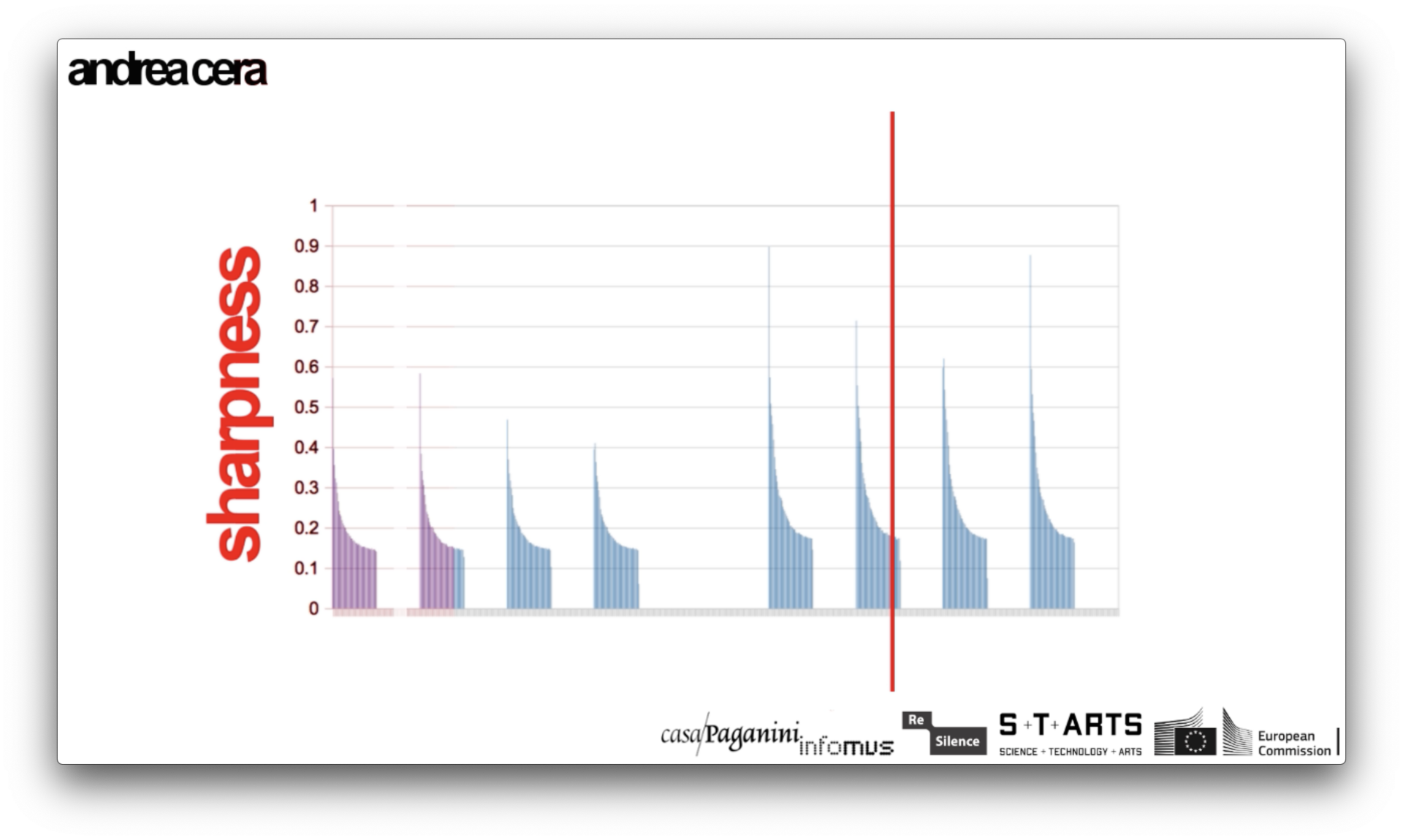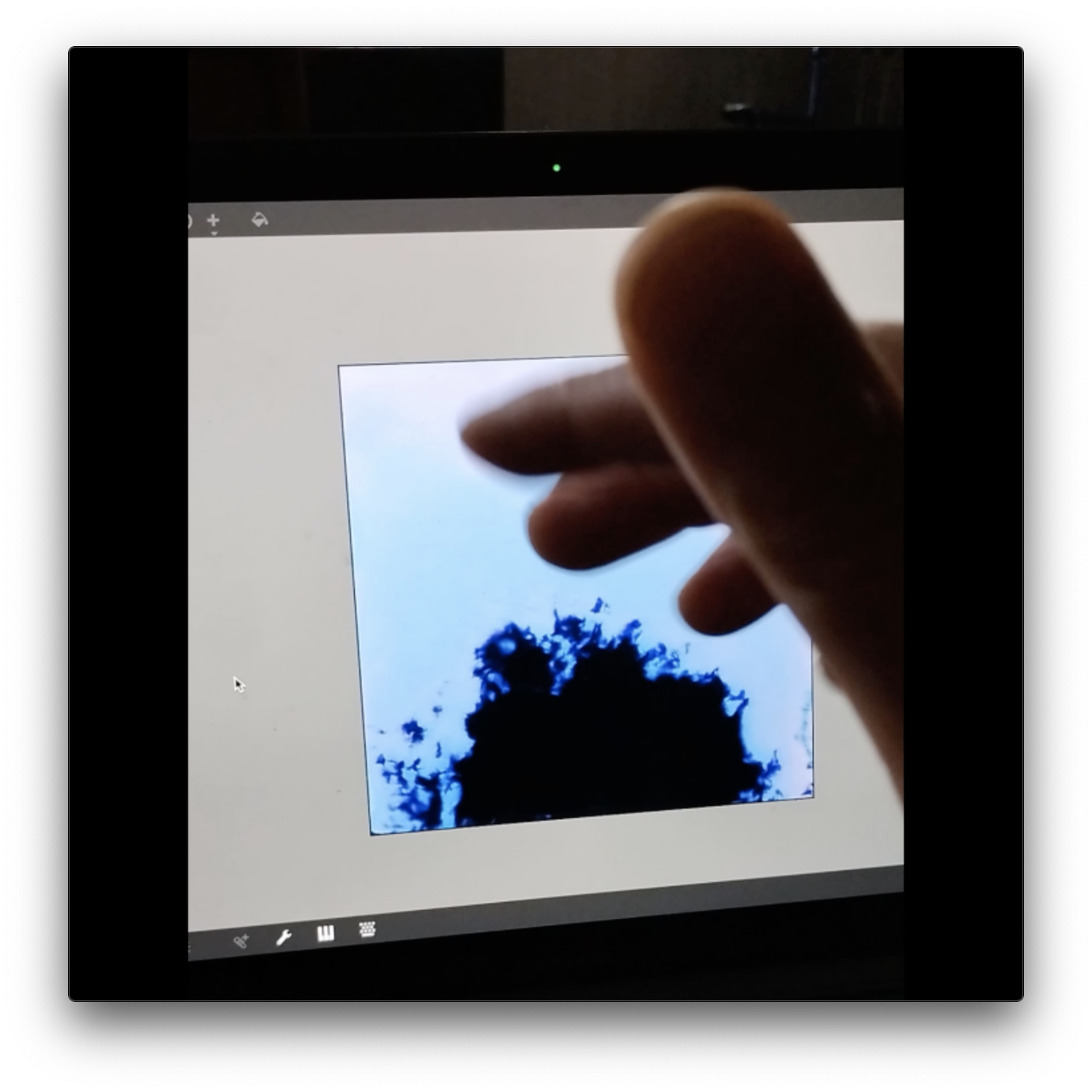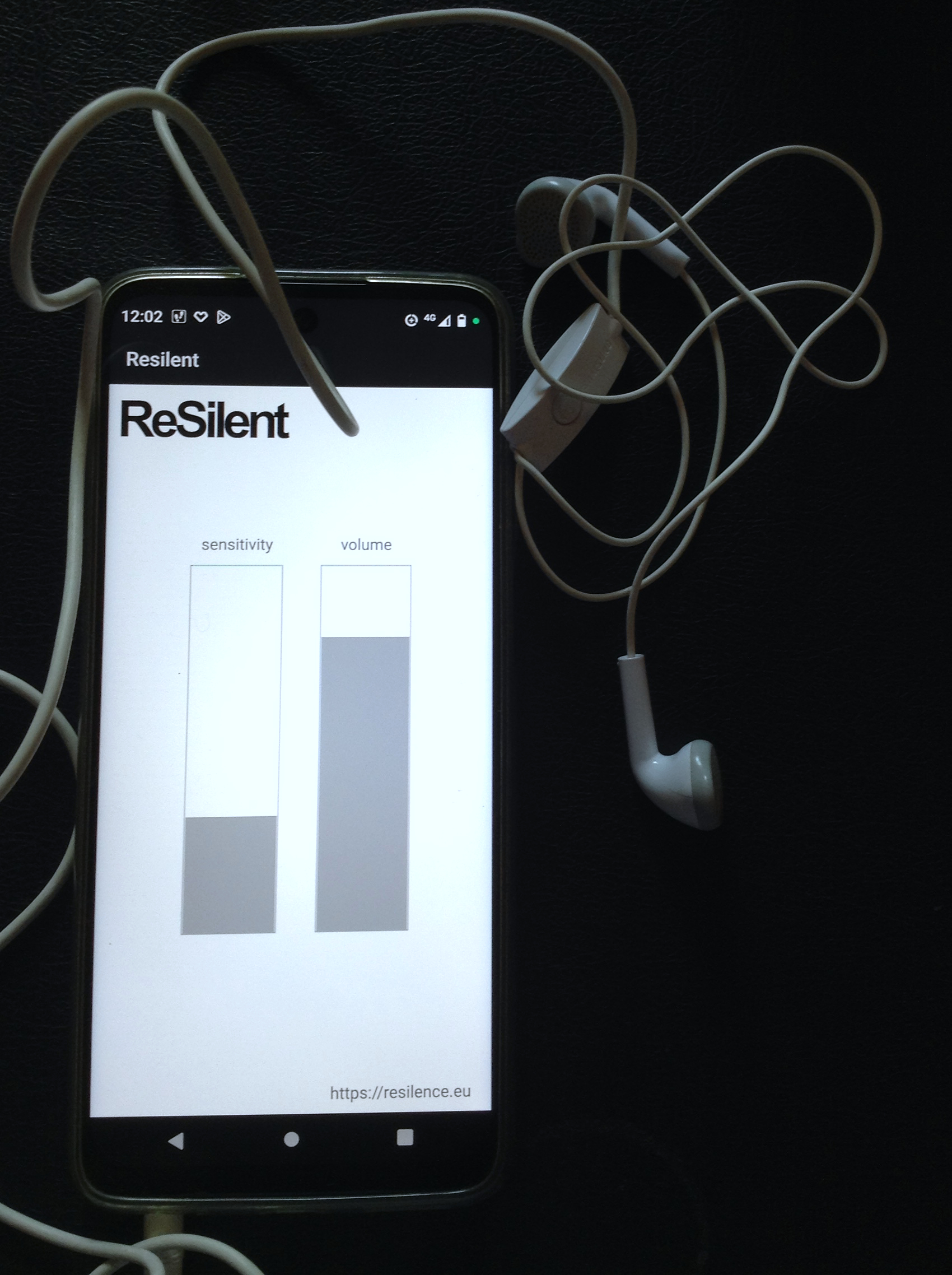+ WHAT?
Examine the intrusiveness of urban soundscapes, explore innovative countermeasures, and analyse how soundscapes influence movement and behaviour
+ HOW?
Modelling, automated analysis and timbral manipulation of intrusive soundscapes
This research stems from a core curiosity: what makes certain sounds in the everyday soundscape more intrusive than others? What gives them salience—causing them to emerge unexpectedly from the acoustic background? The focus is not on conscious evaluation, but on the primitive mechanisms that draw specific sounds to conscious perception. The investigation explores whether body movement can serve as a privileged point of observation for gaining insight into these phenomena. Intrusiveness in city soundscapes has potential implications for public health and quality of life, positioning this research beyond purely artistic concerns.
The project has been envisioned as a modular structure in which sound design techniques, scientific experiments, artistic practices, and pedagogical interventions are closely intertwined, contributing to the broader challenge of sound pollution and the development of innovative responses. The research aims to move beyond the commonly used metric of sound pressure level in assessing noise pollution, by focusing on additional timbral and temporal characteristics. In particular, four timbral descriptors are at the core of the analysis: spectral centroid, roughness, spectral sharpness, and spectral skewness.
The study is grounded in a curated collection of intrusive urban sounds—primarily traffic and roadwork noise—recorded in various European cities over several years of work in sound design. The focus on urban environments reflects both the prominence of this topic in the scientific literature and the urgency of addressing its consequences for citizens’ well-being. Recognising that intrusive sounds are often unintended side effects of technology, the research also incorporates sounds such as smartphone alerts, ringtones, and music, which may become disruptive even at low volume. The technological approaches proposed in this work aspire to counteract any type of sound that emerges intrusively from a background, regardless of its origin.
Collaborations:
Pilot Experiment: The experiment conducted with InfoMus–Casa Paganini confirmed that sounds designed according to low-intrusiveness criteria—particularly when shaped within 6–10 second timeframes—have a softer impact on the qualities of human movement, compared to sequences of typical intrusive urban sounds. The control condition (background noise only, with no foreground signals) showed no measurable effect on movement. Focusing on bodily response allowed for organic, non-verbal feedback, unaffected by the distortions introduced by individual, cultural, or emotional interpretation.
ReSilent: The core algorithm was designed by the artist in MaxMSP/RNBO and ported to Android by Julien Boit using the JUCE framework.
Moving Soundscapes: The movement analysis system draws on concepts, methods, and algorithms developed by InfoMus–Casa Paganini, particularly in relation to smoothness and jerkiness metrics. To support spatial awareness within the installation, a video projection was integrated to attract and guide visitors’ attention. The visual material was developed in collaboration with CERTH, which created a GAN network that translates timbral parameters (e.g., spectral centroid, roughness) into visual attributes such as brightness, saturation, and patterns. This cross-modal mapping enriches the immersive quality of the installation.
sound design, intrusive sounds, salience, low-intrusiveness, augmented audio, interactive installation, reactive soundscape, movement analysis, affective computing, AI-generated visuals
Interactive Modules & Web Tools
The ReSilence residency focused on two main modules: ReSilent (Android app) and Moving Soundscapes (interactive installation), as well as on participation in the design and implementation of a scientific experiment/pilot study led by the InfoMus–Casa Paganini research centre.
ReSilent is a proof-of-concept smartphone app (currently for Android) embedding a series of sound design techniques aimed at reducing the intrusiveness of sound signals. The sounds generated through these techniques were investigated and validated within the pilot experiment conducted in collaboration with InfoMus–Casa Paganini. The app processes, in real time, the sound captured by the smartphone’s microphone and delivers the resulting counter-measures through headphones. The core technique consists in generating a background sound whose timbral characteristics (in terms of spectral centroid, roughness, etc.) imitate those of emerging intrusive sounds. This timbral resemblance reduces their salience, although it may slightly increase the overall sound level. This potential drawback is counterbalanced by the filtering and dampening effect provided by headphones
The same analytical methods used in the pilot experiment—focused on participants’ body movements—and the underlying sound design techniques also form the basis of the artistic installation Moving Soundscapes. In this interactive environment, the qualities of visitors’ movements are mapped to the intrusiveness of a generated soundscape and a real-time video stream. The system analyzes movement features such as fluidity, jerkiness, predictability, and energy, and maps them to the timbral characteristics of a soundscape produced via three main granulators and several synthesis modules. The video stream is generated using a GAN-based system (see video).
Intrusiveness Image Generation
An audio-to-visual translator that estimates the balance between industrial/intrusive and natural/non-intrusive character from spectral centroid, sharpness, reversed skewness, and roughness, then drives a multi-conditional GAN to synthesize an image whose saturation, contrast/brightness, symmetry, and patterning reflect the sound’s character. Developed by CERTH
In December 2024, Moving Soundscapes was presented in Catastrofi del Silenzio, an experimental public event at the InfoMus–Casa Paganini premises in Genoa. Visitors participated in a series of eight workshops addressing the relationship between intrusive sounds, body movement, and urban environments. Following the workshops, they experienced the installation. The interaction model—where any rigidity, jerkiness, or unpredictability in movement triggers increasingly intrusive audio-visual output—combined with the workshop content, encouraged participants to explore new bodily awareness and interpersonal dynamics.
ReSilent was also presented at Catastrofi del Silenzio through a dedicated workshop. In June 2025, it was introduced to a professional audience (neuroscientists, healthcare providers, psychologists) during the symposium The Sound of Longevity: Music and Technology for a Healthy Ageing, organized by the European Interdisciplinary Council on Ageing. The presentation focused on the app’s potential to reduce sound intrusiveness in healthcare contexts, such as hospitals and intensive care units.
These public and professional engagements are complemented by an online presence through the artist’s YouTube channel, which continues to disseminate the outcomes of the residency.
Lessons learned:
One of the key insights gained from these experiences concerns the challenge of communication. Since people often simplify complex topics by separating them into isolated categories, it is essential to clarify that ReSilent is not designed to eliminate sound intrusiveness entirely—which is impossible—but to reduce it incrementally. The effectiveness of this technology lies in its ability to create small, cumulative improvements that become perceptible over time. Similarly, the impact of Moving Soundscapes is greatly enhanced when paired with preparatory activities such as workshops, which deepen the audience’s engagement and understanding.
The pilot experiment offers insight into how intrusive sounds affect not only perception but also physiological and behavioural responses—often without conscious awareness and beyond voluntary control. The pedagogical activities, particularly Catastrofi del Silenzio, aimed to raise public awareness around the challenges explored in ReSilence’s Use Case 3.
Moving Soundscapes proposes a symbolic, abstract exploration of these issues. For visitors who had taken part in the workshops, the installation became a space for experimenting with new forms of movement and bodily awareness—potentially influencing how they relate to others in shared environments and prompting reflection on what it means to be “intrusive.”
Adaptability / interoperability:
The ReSilent app demonstrates strong potential for practical application as a countermeasure against noise pollution in the peri-personal space—wherever soundscape quality is compromised. Although it is not a definitive solution, it supports the emergence of a community of listeners attuned to the acoustic environment and engaged in a gradual transformation of everyday soundscapes. In this envisioned future, sonic elements no longer overlap passively, but begin to relate more actively and responsibly.
Impact:
The pilot experiment, sound design refinement, and algorithms developed during the residency constitute a valuable contribution to the scientific discourse on sound intrusiveness—currently too centered around sound pressure levels. The residency’s educational dimension (YouTube playlist, workshops, etc.) plays an essential role in ensuring that public and professional awareness of timbral saliency and temporal dynamics in sound pollution continues to grow.
Pedagogical activities are also vital in facilitating the adoption of tools like ReSilent. Given the variability of real-world soundscapes, the ReSilent app includes two adjustable controls (sensitivity, level), which require some listening skill to use effectively. This ability to “tune” the app’s response can be developed through educational interventions. As users grow more aware of the quality of their acoustic environment, the tool becomes more effective and meaningful.
Nevertheless, the tuning aspect also points to a possible direction for further development. Future versions of ReSilent could include adaptive presets, activated through mapping strategies linked to trend analysis of soundscape events. This would enable the app to autonomously adjust to changing environments.
Talking about ReSilent at the symposium “The Sound of Longevity: Music and Technology for a Healthy Ageing”, organized by the European Interdisciplinary Council on Ageing.
